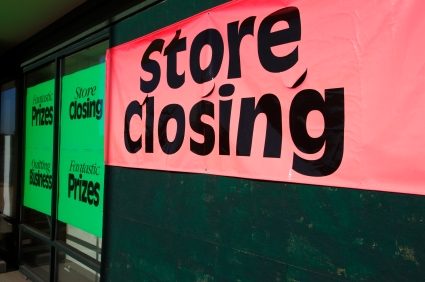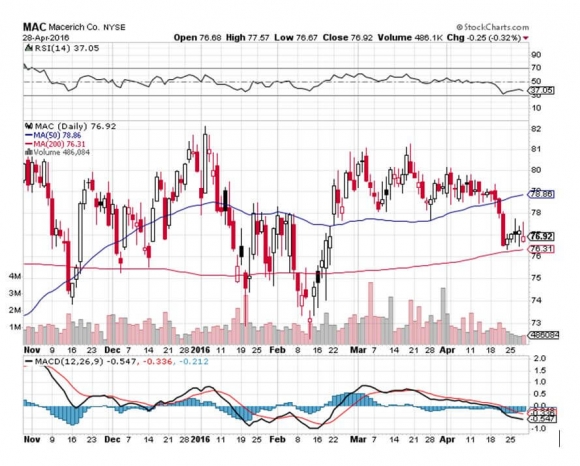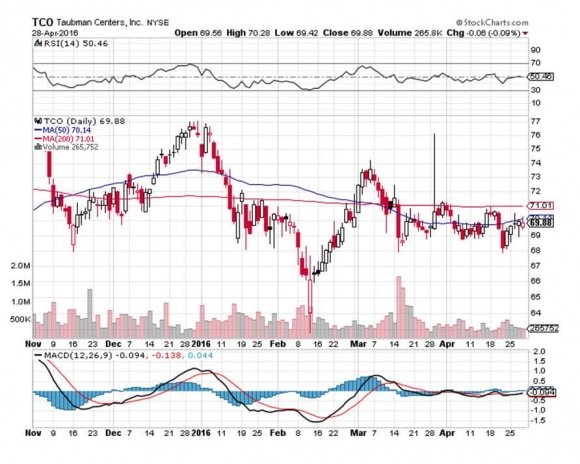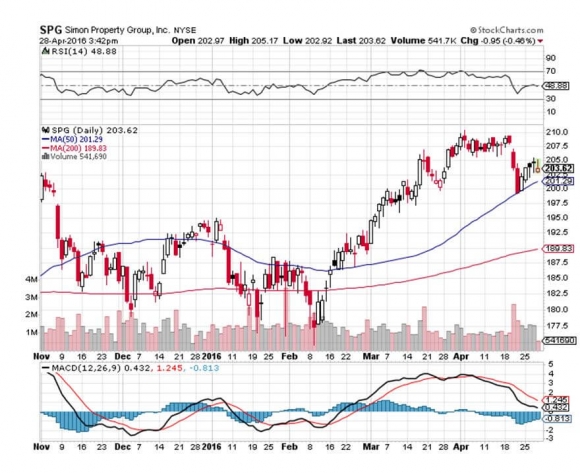The Death Of The Mall? Not So Fast

We’ve all heard this story before.
Malls are dying. Commerce is moving online at breakneck pace. Investing in retail is a death wish.
No less a figure than Bill Gates, Sr. told me that in a decade malls would only be inhabited by climbing walls and paintball courses, and that was a decade ago.
Except it didn’t quite work out that way. Some malls are playing out Mr. Gates’ dire forecast. But others are booming. It turns out that there are malls... and then there are malls.
There is one big kicker here that no one is noticing except me. If my prediction that this is not a low interest rate decade, but a low interest rate century turns out to be correct, then mall REIT’s with their high yields are the “BUY” of the century.
Let me expand a bit on my thesis.
Technology is moving forward at an exponential rate. As a result, product performances are improving dramatically, while costs are falling. While commodity and energy prices are rising, they are but a tiny fraction of the cost of production.
In other words, DEFLATION IS HERE TO STAY!
The nearest hint of real inflation won’t arrive until the 2020’s when Millennials become big spenders, driving up the cost of everything.
We also have the most dovish Federal Reserve in history. Until my former economics professor Janet Yellen sees “the whites of inflation’s eyes” she’ll limit interest rate hikes to a quarter point a year, if that. That’s until we go into the next recession, when US rates will go negative.
So with that issue decided, let's go back to the REIT thing. Real Estate Investment Trust’s are a creation of the Internal Revenue Code, which gives preferential tax treatment for investment in malls and other income generating properties.
There are 1,100 malls in the United States. Some 464 of these are rated as B+ or better and are concentrated in the biggest spending parts of the country (San Francisco, Beverly Hills, Greenwich, CT, etc).
Trading and investing for a half century, I have noticed that most mangers are backward looking, betting that existing trends will continue forever. As a result, their returns are mediocre at best and terrible at worst.
Truly brilliant managers make big bets on what is going to happen next. They are constantly on the lookout for trend reversals, new technologies, and epochal structural changes to our rapidly evolving modern economy.
I am one of those kinds of managers.
These are not your father’s malls. It turns out the best quality malls are booming, while second and third tier ones are dying the slow painful death that Mr. Gates outlined.
It is all a reflection of the ongoing American concentration of wealth at the top. If you are selling to the top 1% of wealth owners in the country, business is great. If fact, if you cater to the top 20%, things are pretty damn fine.
You can see this in the top income producing tenants in the “class A” malls. In 2000, they comprised J.C. Penney, Sears, and Victoria’s Secret. Now Apple, L Brands, and Foot Locker are sought after renters. Put an Apple store in a mall, and it is golden.
And what about that online thing?
After 20 years of online commerce, the business has become so competitive that profit margins have been beaten to death. You can bleed yourself white watching Google Adwords empty out your bank account. I know, because I’ve tried it.
Many online only businesses are now losing money, desperately searching for that perfect algorithm that will bail them out, going head to head against the geniuses at Amazon.
I open my email account every morning and find hundreds of solicitations for everything from discount deals on 7 For All Mankind jeans, to the new hot day trading newsletter, to the latest male enhancement drug (although why they think I need the latter is beyond me).
Needless to say, it is tough to get noticed in such an environment.
It turns out that the most successful consumer products these days have a very attractive tactile and physical element to them. Look no further than Apple (AAPL) products, which are sleek, smooth, and have an almost sexual attraction to them.
I know Steve Jobs drove his team relentlessly to achieve exactly this effect. No surprise then that Apple is the most successful company in history, and can pay astronomical rents for the most prime of prime retail spaces.
It turns out that “Clicks to Bricks” is becoming a dominant business strategy. A combination of the two is presently generating the highest returns on investment in retail today.
People start out by finding a product online, and then going to the local mall to try it on, touch it , and feel it.
Research shows that two thirds of Millennials prefer buying their clothes and shoes at malls. Once there, the probability of a serendipitous purchase is far great than online, anywhere from 20% to 60% of the time.
This explains why pure online businesses by the hundreds are rushing to get a foothold in the highest end malls.
Immediate contact with a physical customer give retailers a big advantage, gaining them the market intelligence they need to stay ahead of the pack. In “fast fashion” retailers like H&M and Uniqlo, which turn over their inventories every two weeks, this is a really big deal.
There’s more to the story. Malls are not just shopping centers, they have become entertainment destinations. With an ever increasing share of the population chained to their computers all day, the demand for a full out-of-the-house shopping, dining, and entertainment family experience is rising.
Notice how Merry Go Rounds have started popping up at the best properties. Imax Theaters are spreading like wildfire. And yes, they have climbing walls too. I have not seen any paintball courses yet, but the guns and accessories are for sale.
This is why all of the highest rated malls in the country are effectively full. If you want space there you have to wait in line. REIT managers pray for tenant bankruptcies so they can jack up rents on the next incoming client, or pivot their strategy towards a new retail niche.
Malls are also in the sweet spot in the alternative energy game. Lots of floor space means plenty of roof space. That means they can cash in on the 30% federal investment tax credit for solar roof installations. Some malls in sunny states are net power generators, effectively turning them into mini local power utilities.
Fortunately for we investors, we are spoiled for choice in the number of securities we can consider. Many have a return on investment of 9-11%, a portion of which is passed on to the end investor.
There are now 25 REIT’s in the S&P 500. The sector has become so important that the ratings firm is about to create a separate REIT subsector within the index.
According to NAREIT.com, these are some of the largest mall related investment vehicles in the country:
Simon Growth Property (SPG) is the largest REIT in the country, with 241 million square feet in the US and Asia. It is a fully integrated real estate company which operates from five retail real estate platforms: regional malls, Premium Outlet Centers, The Mills, community/lifestyle centers and international properties. It pays a 3.17% dividend.
Macerich Co. (MAC) is a California based company that is the third largest REIT operator in the country. It has been growing though acquisitions for the past decade. It pays a 3.53% dividend.
Taubman Centers, Inc. (TCO) runs a national network of malls in some of the priciest zip code in the country. Properties include the Beverly Center in Los Angeles, Stamford Town Center in Stamford, CT, and the Fair Oaks mall in Fairfax, VA. It was established by the late Alfred Taubman of Sotheby’s fame. It pays a 3.41% dividend.
Mind you, REIT’s are not exactly risk free investments. To get the high returns you take on more risk. We remember how disastrously the sector did when the credit crunch hit during the 2009 financial crisis. Many went under, while others escaped by the skin of their teeth.
There are a few things that can go wrong with malls. Local economies can die, as exemplified by Detroit. Populations age, shifting them out of a big spending age group.
These are all highly leveraged companies, so any prolonged rise in interest rates could be damaging. But as I pointed out before, there is little chance of that in the near future.
The bottom line here is that we are seeing anything but the death of the mall. It just depends on the mall.
All in all, if you are looking for income and yield, which everyone on the planet is currently pursuing, then picking up some REIT’s could be one of your best calls of the year.



See You At the Mall
The Diary of a Mad Hedge Fund Trader, published since 2008, ...
more



